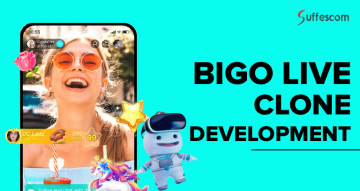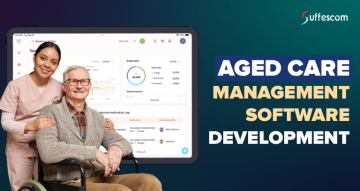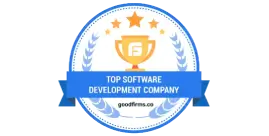Software Integration Services In Medical Devices: Prime Elements, Challenges & Features

The healthcare industry is an extensive landscape that facilitates top-notch services to patients. It is gaining immense popularity and garnering attention among individuals, be they healthcare professionals, patients, or businesses.
Various healthcare software like EHR, EMR, and medical billing have eased and outrightly modernized how hospitals perform operations, allowing patients to get details about their vitals. The software is subjected to necessary integrations to enhance efficiency and performance.
Speaking of the same, medical software integration with equipment has become a necessity among healthcare businesses. If you need assistance of a similar kind, then Suffescom is at your service. Partner with us, enjoy and leverage our medical device integration software services, and witness seamless data exchange between the patient and healthcare equipment.
Interpreting Medical Device Integration
With a medical device integration that absolutely streamlines the operational workflow, uninterrupted data flow from medical devices to the hospital's information system is possible. This is a basic necessity of advanced healthcare, where precision and accessibility to health records are paramount.
Medical device integration has a wide scope. Broadly speaking, it helps in the most underrated but effective things, i.e., data collection and analysis. Medical equipment automatically captures information, removing manual errors and thereby saving time. Massive patient data is generated with the help of medical equipment.
Healthcare professionals access real-time patient data and provide quick responses to patients' conditions, eventually amplifying patient outcomes. Moreover, the interoperability offered is exceptional, allowing seamless data flow across multiple devices and systems, paving the way for unified patient care.
Medical Device Integration Service Company
Our professionals are adept at developing top-notch healthcare software and offering the best integration services to streamline workflows. Everything from EHR, EMR, HIS, and medical device software will seamlessly integrate within the existing systems.
Prime Elements Of Medical Device Integration Software
Optimized patient care and organized clinical workflows are achieved with a vital tool, i.e., medical device software. The performance is achieved due to the availability of the following key companies;
1. Device Connection
The hard core element is to offer communication with a diverse range of medical devices, typically monitors, Defibrillators, ventilators, oximeters, etc. The data from such devices is received and transmitted to the desired platform to perform analysis.
2. Data Security
The patient's data needs to be secured at any cost, which is possible with the constant audit trails, encryption protocols, and data masking techniques that protect unauthorized access to the sensitive data.
3. Data Normalization
The normalization method makes it possible to take raw data from the medical equipment and then convert it into a comprehensible format. It works in a way that multiple devices generate data in varied formats, which could be challenging to comprehend. With this technique, the data is acknowledged and then interpreted for better understanding.
4. User Interface
Last but not least, the interface needs to be user-friendly and easily navigable. The visually appealing elements put forth an effective gateway by allowing the professionals to conveniently get hold of the data from the interconnected systems.
Medical Device Software Integration Services We Offer
Experience the matchless set of services that enables the smooth flow of data from medical equipment to healthcare systems, accessing real-time insights and helping in data-driven decision making.

1. Medical Device Connectivity
Establishing connections within the devices to access the updated patient information and make quick decisions that speed up the treatment and accelerate outcomes.
2. EHR/EMT Integration
Encompasses smooth data exchange, elevated efficiency, interoperability, informed decision-making, increased care coordination, and data mapping.
3. IoT Device Integration
Entails devices' connection with other devices/platforms, cloud systems, and databases to fetch real-time data that helps make tailored treatment plans and increase patient safety.
4. Data Analytics Integration
Merges data from different sources and performs data extraction and transformation using advanced techniques that ensure enhanced accuracy and consistency and handle data access.
5. Regulatory Compliance Integration
Integrates relevant regulations like HIPAA compliance throughout the software's lifecycle, executing robust security measures and thereby protecting sensitive patients' data.
6. Clinical Decision Support Integration
Enables clinicians to make accurate decisions based on evidence and upgrade the overall healthcare delivery through customized order sets, tailored reminders, diagnosis support, etc.
7. Medical Imaging Software
With AI-enabled algorithms, medical images such as CT scans, MRIs, X-rays, etc., can be analyzed and interpreted, which helps in accurate diagnosis and treatment.
8. Medical Device Software Validation
Involves rigorous testing and authentication, ensuring the software works as intended while detecting potential hazards and resolving those issues by executing the migration strategies.
9. Telemedicine App Integration
Provides real-time consultations, tracks patients' progress, shares medical reports electronically, and offers guidance related to specific procedures, including virtual home health care.
Accelerate Growth With Medical Software Integration Service
Start today and dominate the healthcare industry with our splendid range of services, taking your business one notch higher.
Considerable Challenges Involved In The Medical Device Integration Software Service
There is absolutely no doubt that such a type of integration within meets various obstacles that could be quite challenging. The most important one is the interoperability issue, where varied data formats are used by medical devices, creating inconsistencies among systems. Other than that, the challenge is to maintain data security so that breaches of any kind do not happen.
The integration involves a complicated implementation process where teamwork among various entities is required, which takes a long time. The compliance with the regulatory bodies, the regulatory compliance evolves with the changes in the ever-evolving healthcare sector, where constant updates are required, so maintaining the balance and being part of change.
Also, adopting the latest significant technology requires effort and consistent training. There is only a benefit when maximum user adoption; only then will it yield potential benefits.
How To Develop And Integrate Software In Medical Equipment?
Building medical equipment software and integrating it within a medical device system somehow looks easy, but it is actually daunting. The entire process requires absolute attention, both from a development and a regulatory point of view.

1. Defining Requirements
The first and foremost thing is to understand the project requirements from the clinical point of view. The specifications related to the functional capabilities are defined and regulatory standards with respect to the device are comprehended.
2. Software Design and Architecture
Next, separating the system design, such as cloud architecture and embedded software, is pivotal, followed by modular design, like user interface and database management. Data integrity is maintained during this phase, ensuring precise data processing.
3. Regulatory Compliance
Another important thing is to build software that adheres to regulatory standards to avoid any legal issues later. These standards are responsible for defining every lifecycle and outlining the validation requirements applicable to an extensive set of medical devices.
4. Development
The necessary development tools are chosen for developing medical software. These include the latest programming languages and testing frameworks, which ensure quality coding while meeting reliability standards.
5. Integration With Existing Medical Devices
The seamless interaction between the hardware devices and the software ensures data exchange among different devices. Things surrounding interoperability need to be considered so that the flow of information is not restricted at any given point.
6. Quality Assurance
Testing methods, such as penetration, unit, usability, and functional, are adopted to authenticate the components and remove abnormalities. Quality is improved while testing the software in real-world scenarios and meeting the standards to prevent cyber threats.
7. Launch And Maintenance
The medical device software is then deployed on a dedicated server and released in various versions for public use. After that, nonstop maintenance services are provided to ensure safety and necessary updates.
Key Features Of Medical Device Software Integration
Discover the phenomenal attributes that help streamline business processes, maintain consistency, and offer security through data exchange.
1. Plug-and-Play Connectivity
Helps integrate multiple medical devices with the existing healthcare systems, eliminating the need for complicated configuration.
2. Device Management
Enables the doctors to monitor the patient's health remotely via robust functionalities such as performance monitoring, remote configuration, etc.
3. Real-Time Data Streaming
Enables healthcare professionals to make timely clinical decisions and necessary interventions that enhance patient care outcomes and monitor patient data in real time.
Experience The Most Seamless Medical Device Integration Software Services
We aim to integrate advanced solutions into your healthcare software, enabling effective data exchange and streamlined workflows. Contact our team and get market-leading in just a few taps.
Medical Software Device Solutions Elevating The Healthcare Performance
Healthcare is the most important sector as it directly influences individual lives and contributes heavily to societal well-being. More than anything else, the involvement of the technologies and developing software helps ease access to better healthcare services and improve quality of life. Our team focuses on delivering innovative healthcare solutions that will take your business to the heights of success.
1. IoMT App Development
provides outstanding remote monitoring, upscaled healthcare delivery, improved patient outcomes, optimized patient engagement, accessibility among patients, and more. Real-time data is captured concerning the vital signs, helping doctors respond instantly to emergencies.
2. AI Healthcare Software
Harness the power of our software solutions, which help in better treatment planning and improve diagnostics by performing medical image analysis. The AI-powered chatbots help patients schedule appointments, ask questions, and transcribe patient conversations into organized clinical notes.
3. EHR Software Development
It provides incredible perks to healthcare providers, facilities, and patients. The doctors get updated information about the patient's health and, based on that, make appropriate decisions. It eliminates the risk of medical errors and streamlines administrative operations like appointment scheduling, billing, etc.
4. Patient Record Management App
Enjoy optimized patient care with our comprehensible solutions. These solutions lead to accurate diagnoses, in-depth patient histories, and seamless communication between patients and healthcare providers. They also help patients keep track of their appointments and medications to achieve better health outcomes.
5. Mental Health App Development
Encompasses a wide range of services like meditation, breathing, cognitive behaviour therapy, addiction recovery, mood tracking, and more. The patients get a platform to unwind themselves, become stress-free with self-monitoring tools, and participate in teletherapy sessions from their homes.
Benefits Of Medical Software Integration Services
Explore the comprehensive advantages that make the healthcare workflow super smooth and tremendously elevate the patient care to the next level.
1. Enhanced Patient Care
The integration services allow timely intervention by healthcare professionals or authorized organizations that monitor the patient's activities 24/7 and provide personalized treatment care.
2. Data-Driven Insights
Advanced analytical tools help gain meaningful information regarding healthcare patterns and patient populations. All this is possible with integrating medical equipment within the software that drives positive outcomes in delivering healthcare services.
3. Cost Effective
Effective resource management, error reduction, and automated processes reduce the burden on the healthcare facilities. This directly impacts the operational costs, increases productivity, and results in massive cost savings.
4. Remote Monitoring
Medical device software integration services are helpful for patients suffering from chronic diseases. Doctors can monitor patients' health status without a physical checkup, due to the availability of monitoring devices like wearable trackers, glucometers, pulse oximeters, etc.
5. Personalized Care
The integrated systems offer a holistic review of the patient's health condition, which helps create tailored treatment plans. These include improving drug dosages and effective therapies while analyzing patient-specific data.
6. Mitigates Medical Errors
The involvement of the EHRs and CDSS helps streamline processes, optimize data accuracy, and offer real-time guidance. This helps with automatic data integration and gathering, which reduces manual errors and eliminates misinterpretations of any kind.
7. Enhanced Data Security
The use of encryption protocols, regular audits, security patches, and compliance with the regulatory industry standards protects the confidential data and ensures secure transmission of the sensitive patient details.
Estimating The Cost Of Medical Software Integration Service
Integrating the medical device software in the existing healthcare software needs precision and expertise of the utmost level. The thing is that there are various compatibility issues within the systems that could generate inconsistencies and could lead to potential risks. So, based on that, the cost ranges from $5000-$15000, depending on eliminating the security vulnerabilities and maintaining robustness.
Go through the following factors that can affect the budget;
- Privacy Concerns
- Scalability limitations
- Complexity
- Data mapping
- Compatibility Issues
- Custom-tailored integration software
Why Does Suffescom Excel In Medical Device Integration Software Services?
As a reputed healthcare software development company, we offer high-quality solutions and deliver best-in-class integration services with different systems.
- 10+ years of experience in software development
- Tech prowess in cutting-edge technologies
- Serving clients globally
- Awarded and recognized by the reputed organizations
- Successfully delivered 100+ web, mobile, and software
- Agile & DevOps development methodologies
- Continuous integration practices
- Product engineering
FAQs
How much does medical software device integration cost?
The integration cost ranges from $5000-$15000, based on certain factors such as project complexity, tech stacks, no. of integrated devices, and more. To get the exact cost analysis, it is preferable to consult a reliable medical software development company that aligns with your business ideas.
How Much Time Does It Take To Integrate Medical Equipment In The Software?
It takes around 2-3 weeks for the necessary integrations to take place. depending upon the medical devices that need to be included. The more equipment there is, the more time it will take to establish data formats and communication protocols.
What are the applications linked with medical device software integration?
The use cases are remote care and telemedicine, patient self-service, diagnostic and treatment assistance, and Medication management.
How to choose the best partner among medical device software development companies?
Perform necessary research, review their profiles on reputed portals like Clutch and GoodFirms, verify their testimonials, analyze their portfolios, and validate the client's reviews before hiring the development firm.
Which technologies are used in medical software device integration?
Some popular technologies are AI, ML, Data science, IoT, Cloud, Big Data, AR/VR, Edge Computing, Cybersecurity, and quantum computing.








